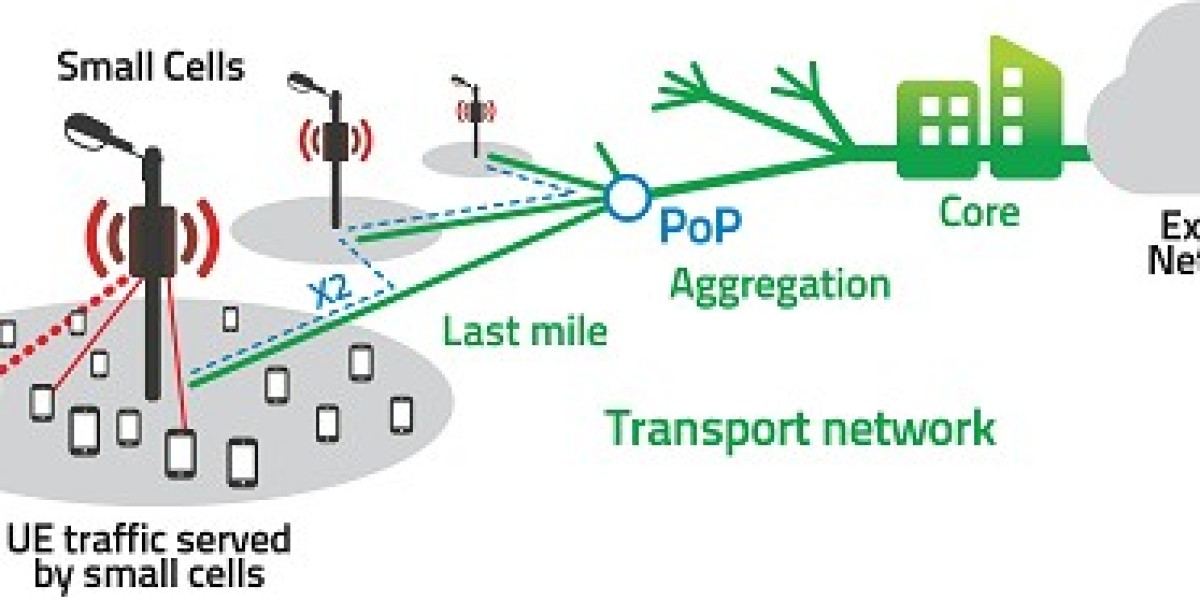Small Cell Networks Market Overview -
The small cell networks market has witnessed significant growth in recent years, driven by the global shift toward enhanced mobile connectivity and 5G infrastructure. Small cells are low-powered radio access nodes that improve network capacity and coverage in dense urban areas, rural zones, and indoor environments. These compact devices play a pivotal role in addressing the increasing demand for high-speed mobile data and low-latency communications. As mobile data traffic continues to surge, network operators and telecom providers are investing heavily in small cell solutions to bridge coverage gaps and ensure seamless connectivity. With 5G deployment accelerating worldwide, small cells have become indispensable for enabling ultra-dense networks and supporting emerging technologies such as IoT, AR/VR, and autonomous systems.
Get a sample PDF of the report at –
https://www.marketresearchfuture.com/sample_request/5360
Industry News -
In recent developments, major telecom players such as Ericsson, Nokia, and Huawei have ramped up their investments in small cell R&D, aiming to optimize deployment for indoor venues and smart city infrastructure. Governments in the U.S., China, and Europe have also introduced initiatives to fast-track small cell installation by easing regulatory bottlenecks. For instance, the FCC’s 5G FAST plan in the U.S. is designed to streamline the permitting process for small cell deployment. Meanwhile, collaborations between telecom operators and tech firms are leading to the development of open RAN (Radio Access Network) small cell solutions, which allow for greater interoperability and reduced costs. These strategic moves highlight the growing importance of small cells in the next-generation wireless ecosystem.
Market Segmentation -
The small cell networks market can be segmented by component, type, deployment mode, and end user. By component, the market includes hardware, software, and services, with hardware currently holding the largest share. Type-wise, small cells are categorized into femtocells, picocells, and microcells, each serving different coverage areas and capacity requirements. Deployment mode segmentation covers indoor and outdoor small cells, with indoor deployments dominating due to the rising demand for enterprise-grade connectivity in offices, hospitals, malls, and homes. From an end-user perspective, the telecom service providers segment remains dominant, although enterprise adoption is rapidly increasing due to digital transformation trends and the shift toward private 5G networks.
Market Key Players -
Several key players dominate the global small cell networks market. Companies like Ericsson, Nokia, Huawei, and ZTE continue to lead with comprehensive small cell portfolios and robust global deployments. Other important contributors include Airspan Networks, CommScope, and Samsung Electronics, all of which are focusing on product innovation and strategic partnerships. Additionally, Cisco Systems and Qualcomm are investing in small cell technologies aligned with the open RAN initiative, aiming to disrupt traditional infrastructure with modular, scalable solutions. The competitive landscape is marked by continuous innovation, with companies focusing on integrating AI-driven network management and edge computing capabilities into small cell deployments to enhance performance and efficiency.
Regional Analysis -
Geographically, North America dominates the small cell networks market, led by the United States, where 5G rollouts and increasing demand for wireless connectivity in urban areas are fueling small cell deployments. Europe is also witnessing steady growth, driven by smart city initiatives and expanding 5G networks in countries like Germany, the UK, and France. In the Asia-Pacific region, China holds a substantial market share thanks to aggressive 5G infrastructure investments, while India, Japan, and South Korea are emerging as strong contenders. Latin America and the Middle East & Africa are gradually expanding their small cell infrastructure, supported by rising smartphone penetration and government-led digitalization programs. Regional players are increasingly collaborating with global OEMs to build out their mobile broadband capabilities using small cell solutions.
Browse a Full Report –
https://www.marketresearchfuture.com/reports/small-cell-networks-market-5360
Recent Developments -
Recent innovations in the small cell market focus on enhancing network efficiency, simplifying deployments, and reducing costs. For instance, the integration of AI and machine learning is enabling self-optimizing networks, where small cells adapt dynamically to traffic loads and user demand. Companies are also introducing plug-and-play small cell solutions designed for rapid deployment with minimal site preparation. The use of millimeter-wave spectrum in 5G small cells is another significant advancement, providing ultra-fast data rates for high-density environments. Additionally, open RAN-based small cells are gaining traction, promoting vendor interoperability and lowering infrastructure costs. These developments signal a transformative period in the telecom sector, where small cells are at the heart of creating intelligent, high-capacity mobile networks.
The small cell networks market is poised for remarkable expansion as global demand for high-speed, reliable, and scalable wireless communication continues to rise. As 5G becomes mainstream, small cells will serve as the backbone for enhanced connectivity, particularly in urban areas, industrial environments, and smart infrastructure projects. With continued support from governments, telecom operators, and technology providers, the market is expected to witness sustained growth through innovation, strategic partnerships, and regulatory improvements. From improved mobile experiences to enabling futuristic technologies, small cell networks represent a foundational element in the evolution of the global telecom landscape. Businesses that adapt early to this shift will gain a competitive edge in the rapidly digitizing world.
Top Trending Reports:
IT Asset Management Software Market
Microservices Architecture Market
Contact
Market Research Future (Part of Wantstats Research and Media Private Limited)
99 Hudson Street, 5Th Floor
New York, NY 10013
United States of America
+1 628 258 0071 (US)
+44 2035 002 764 (UK)
Email: sales@marketresearchfuture.com
Website: https://www.marketresearchfuture.com








